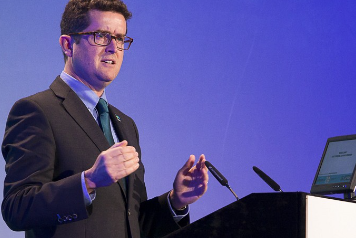What is holding charities back from transforming their financial processes? Insights from our most recent report on digital finance for the charity sector suggests that 22% of finance professionals working in the industry feel that a finance system change would cause problems, delays, backlogs, and productivity issues. This feeling is not uncommon across the finance profession, however, it seems to resonate most with the charity sector. Like anything, being prepared is the best way to head into any project. Read on for a brief look into how Comic Relief successfully transformed their finance system and how others can learn from their success.
Recognising the need for change
Identifying red flags is key at the start of the process. Comic Relief had been with the same supplier for 25 years and were using an outdated system that couldn’t keep up with the ambitions of the organisation. As they developed their business case it was clear that the reasons for change included:
· A lack of integration between all their systems.
· An outdated and hard to use system.
· The need for a web-based system.
· Poor supplier service.
· The need for a system that could adapt to strategic requirements and provide detailed reporting for the whole business, not just finance.
Smart resourcing
A system change is never a one-person job; defining individual responsibilities and roles is an important part of the process. Something Comic Relief realised early on was that they needed to assess their current stakeholders and clearly define responsibilities to ensure the project developed in the right direction. Seconding members of staff for project management and using the RACI methodology really helped them to stay focused and drive the project forward.
Although the software implementation is the main priority, Comic Relief recognised that the people were going to be the ones who make it work for the business. Getting them on board and keeping them motivated throughout the process was necessary for successful completion of the digital transformation.
What were the learnings?
It was clear that something to take from the experience was ensuring that other than just thinking about getting to the go live date, it was just as important to think about what happened after going live. Ensure you put as much planning in place into what happens after the system is live as you do for the testing and preparation for the implementation.
Another aspect of the project that Comic Relief learned from was around training and testing. As they used the superuser method, whereby a number of individuals were selected to undertake training and then they would roll out to the rest of the business, it was clear that it was really important to prepare these users and ensure they are provided with as much information, time, and resource as possible.
Preparing for a digital transformation is the best way to succeed. If you would like to learn more about Comic Relief’s journey you can watch the full video here, or if you have any further questions on how Xledger can support your charity through this process please contact us on mail@xledger.co.uk or visit www.xledger.co.uk.
Charity Times video Q&A: In conversation with Hilda Hayo, CEO of Dementia UK
Charity Times editor, Lauren Weymouth, is joined by Dementia UK CEO, Hilda Hayo to discuss why the charity receives such high workplace satisfaction results, what a positive working culture looks like and the importance of lived experience among staff. The pair talk about challenges facing the charity, the impact felt by the pandemic and how it's striving to overcome obstacles and continue to be a highly impactful organisation for anybody affected by dementia.
Charity Times Awards 2023
Mitigating risk and reducing claims

The cost-of-living crisis is impacting charities in a number of ways, including the risks they take. Endsleigh Insurance’s* senior risk management consultant Scott Crichton joins Charity Times to discuss the ramifications of prioritising certain types of risk over others, the financial implications risk can have if not managed properly, and tips for charities to help manage those risks.
* Coming soon… Howden, the new name for Endsleigh.
* Coming soon… Howden, the new name for Endsleigh.
Better Society

© 2021 Perspective Publishing Privacy & Cookies










Recent Stories